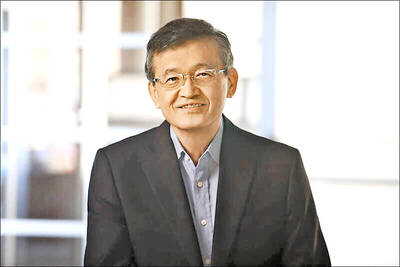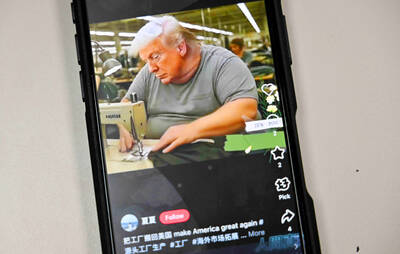AU Optronics Corp (AUO, 友達光電) has suspended production at a plant, which makes polysilicon used in solar wafer manufacturing, in Japan and is assessing potential quake damage to supply chains in the LCD panel industry, the company said.
The Hsinchu-based company said in a statement on Saturday that its manufacturing facilities had not been damaged and there had been no casualties at its Japanese solar-wafer unit, M.Setek Co, in Fukushima Prefecture, one of the areas hardest hit by the magnitude 8.9 earthquake on Friday.
M.Setek produces polysilicon and solar wafers in Soma City, Fukushima Prefecture, both of which are key raw materials for making solar cells. AUO has in recent years expanded into the solar power business, aiming to gain a foothold in the fast-growing green energy market.
AUO has about 800 employees in Japan, with about 700 working at M.Setek, chairman Lee Kun-yao (李焜耀) said yesterday on the sidelines of a job fair in Taipei.
“The [M.Setek] plant was not hit by the tsunami, but ... because of a lack of water and electricity, it is not operational at the moment,” local cable TV network UBN quoted Lee as saying yesterday.
The company downplayed the potential financial impact from the production suspension, adding that M.Setek contributed just 0.3 percent of AUO’s NT$102.62 billion consolidated revenue in the fourth quarter of last year.
As for the possible knock-on effect on the LCD panel industry, Lee said there would certainly be an impact in terms of the upstream supply chain, but that an accurate assessment would require more time.
“We have alternative sources of chemical materials,” Lee said, hinting that the earthquake has had a limited impact on the company’s flat-panel business.
US market researcher IHS iSuppli said on Friday that the earthquake would affect the production of components for LCD panels — including glass, color filters, polarizers, cold cathode fluorescent lamps and light-emitting diodes — as Japanese suppliers play an important role in this line of business.
Meanwhile, Lee said yesterday the company would re-apply to the Investment Commission for permission to change its Chinese investment plan, after the government announced on March 8 that it would allow Taiwanese LCD makers to buy a stake in or merge with Chinese counterparts, as well as invest in Chinese fabs using the same level of technology they currently employ in Taiwan.
In December, the company won government approval to invest US$3 billion in a 7.5-generation fab in Kunshan, China.
ADDITIONAL REPORTING BY CHEN MEI-YING

Intel Corp chief executive officer Lip-Bu Tan (陳立武) is expected to meet with Taiwanese suppliers next month in conjunction with the opening of the Computex Taipei trade show, supply chain sources said on Monday. The visit, the first for Tan to Taiwan since assuming his new post last month, would be aimed at enhancing Intel’s ties with suppliers in Taiwan as he attempts to help turn around the struggling US chipmaker, the sources said. Tan is to hold a banquet to celebrate Intel’s 40-year presence in Taiwan before Computex opens on May 20 and invite dozens of Taiwanese suppliers to exchange views

Application-specific integrated circuit designer Faraday Technology Corp (智原) yesterday said that although revenue this quarter would decline 30 percent from last quarter, it retained its full-year forecast of revenue growth of 100 percent. The company attributed the quarterly drop to a slowdown in customers’ production of chips using Faraday’s advanced packaging technology. The company is still confident about its revenue growth this year, given its strong “design-win” — or the projects it won to help customers design their chips, Faraday president Steve Wang (王國雍) told an online earnings conference. “The design-win this year is better than we expected. We believe we will win

Chizuko Kimura has become the first female sushi chef in the world to win a Michelin star, fulfilling a promise she made to her dying husband to continue his legacy. The 54-year-old Japanese chef regained the Michelin star her late husband, Shunei Kimura, won three years ago for their Sushi Shunei restaurant in Paris. For Shunei Kimura, the star was a dream come true. However, the joy was short-lived. He died from cancer just three months later in June 2022. He was 65. The following year, the restaurant in the heart of Montmartre lost its star rating. Chizuko Kimura insisted that the new star is still down

While China’s leaders use their economic and political might to fight US President Donald Trump’s trade war “to the end,” its army of social media soldiers are embarking on a more humorous campaign online. Trump’s tariff blitz has seen Washington and Beijing impose eye-watering duties on imports from the other, fanning a standoff between the economic superpowers that has sparked global recession fears and sent markets into a tailspin. Trump says his policy is a response to years of being “ripped off” by other countries and aims to bring manufacturing to the US, forcing companies to employ US workers. However, China’s online warriors